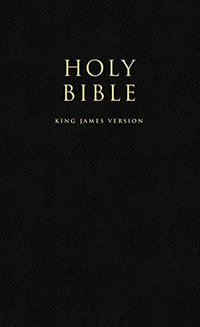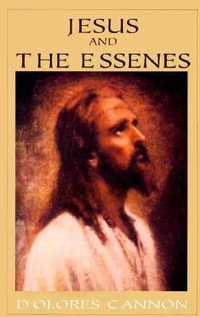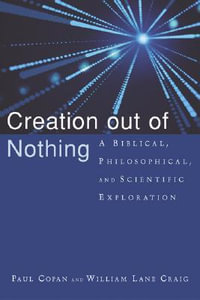| From the Preface to the First Edition | p. 11 |
| Preface to the Fifth Revised Edition | p. 13 |
| Preface to the English Edition | p. 17 |
| Translator's Preface | p. 23 |
| Abbreviations | p. 24 |
| Old Testament Theology: The Problem and the Method | p. 25 |
| The Covenant Relationship | p. 36 |
| The meaning of the covenant concept | p. 36 |
| The history of the covenant concept | p. 45 |
| The jeopardizing of the Yahweh covenant | p. 45 |
| The re-fashioning of the covenant concept | p. 49 |
| The Covenant Statutes | p. 70 |
| The Secular Law | p. 74 |
| Its distinctive character | p. 74 |
| Some crucial phases in the development of the law | p. 83 |
| The Covenant Statutes (continued) | p. 98 |
| The Cultus | p. 98 |
| The significance of the cultus for religion in general | p. 98 |
| The significance of the cultus in the religion of Israel | p. 101 |
| Sacred sites | p. 102 |
| Sacred objects | p. 107 |
| Sacred seasons | p. 119 |
| Sacred actions | p. 133 |
| Consecration and purity rites | p. 133 |
| Sacrificial worship | p. 141 |
| Prayer | p. 172 |
| Synthesis | p. 176 |
| The Name of the Covenant God | p. 178 |
| General semitic designations of God | p. 178 |
| Specifically Israelite designations of God | p. 187 |
| Epithets of Yahweh | p. 194 |
| The Nature of the Covenant God | p. 206 |
| Affirmations About The Divine Being | p. 206 |
| God as personal | p. 206 |
| God as spiritual | p. 210 |
| God as one | p. 220 |
| The Nature of the Covenant God (continued) | p. 228 |
| Affirmations About The Divine Activity | p. 228 |
| The power of God | p. 228 |
| The lovingkindness of God (hesed Yahweh) | p. 232 |
| The righteousness of God | p. 239 |
| The love of God | p. 250 |
| The wrath of God | p. 258 |
| The holiness of God | p. 270 |
| The relation of the Old Testament picture of God to the moral norm | p. 282 |
| Synthesis | p. 286 |
| The Instruments of the Covenant | p. 289 |
| The Charismatic Leaders | p. 289 |
| The founder of the religion | p. 289 |
| The seers | p. 293 |
| The Nazirites | p. 306 |
| The judges | p. 306 |
| Nabism | p. 309 |
| The basic characteristics of the phenomenon | p. 309 |
| The phenomenon of group ecstasy | p. 309 |
| The general religious character of the phenomenon | p. 313 |
| The effects of spirit-possession | p. 319 |
| The theological significance of nabism | p. 318 |
| The degeneration of nabism | p. 332 |
| Classical prophecy | p. 338 |
| Links with nabism | p. 339 |
| The distinctive character of classical prophecy | p. 341 |
| The religious structure of classical prophecy | p. 345 |
| The new experience of the divine reality | p. 345 |
| The working out of the experience of God in the prophetic system of thought | p. 353 |
| The new sense of the unity of life | p. 353 |
| The divine-human relationship transferred to the individual level | p. 356 |
| The prophetic critique of daily life | p. 360 |
| The prophetic attitude to the cultus | p. 364 |
| The prophetic attitude to the national religion | p. 369 |
| Common presuppositions | p. 369 |
| The prophetic re-shaping of the national religion | p. 371 |
| Sin and judgment | p. 374 |
| The prophetic conception of history | p. 381 |
| Eschatology | p. 385 |
| Synthesis | p. 387 |
| The Instruments of the Covenant (continued) | p. 392 |
| The Official Leaders | p. 392 |
| The priests | p. 392 |
| The formation of the priesthood in the history of Israel | p. 392 |
| The religious structure of the priesthood | p. 402 |
| General | p. 402 |
| The distinctive character of the priestly conception of God | p. 406 |
| The relations between God and the world | p. 410 |
| The place of man in the world | p. 415 |
| Human right conduct | p. 415 |
| Cultic activity | p. 419 |
| Human existence in time (history and eschatology) | p. 424 |
| Synthesis | p. 433 |
| The king | p. 436 |
| The origin of the monarchy | p. 438 |
| The ambivalent assessment of the monarchy in the sources | p. 441 |
| The monarchy as a religious office in the history of the covenant people | p. 442 |
| The religious effects of the monarchy | p. 452 |
| Covenant-Breaking and Judgment | p. 457 |
| Judgment as a guarantee and restoration of the covenant | p. 457 |
| The possibility of annulment | p. 457 |
| A new evaluation of God's covenant | p. 458 |
| The hope of the overthrow and punishment of Israel's enemies | p. 459 |
| Foreign influences | p. 461 |
| An execution of Yahweh's righteous judgment | p. 461 |
| Judgment as abrogation of the covenant | p. 462 |
| The transformation of the limited vision of the future | p. 462 |
| The change in the character of the expectation of doom | p. 464 |
| Individual retribution | p. 467 |
| Individualist and universalist elements in the expectation of judgment | p. 467 |
| Fulfilling the Covenant: The Consummation of God's Dominion | p. 472 |
| The principal forms of the Old Testament hope of salvation | p. 473 |
| The importance of the hope of salvation for the doctrine of God | p. 490 |
| The entry of God into history | p. 490 |
| The supramundane character of the messianic kingdom | p. 491 |
| The solution of the pressing problems of religion | p. 492 |
| The origins of the Old Testament hope of salvation | p. 494 |
| Mythical elements | p. 494 |
| Its cultic derivation | p. 497 |
| Its nationalist origin | p. 498 |
| Its religous core | p. 499 |
| Prediction and fulfilment | p. 501 |
| The various attempts at a solution | p. 502 |
| The double relationship of prediction and fulfilment | p. 508 |
| Excursus: The Problem of Old Testament Theology | p. 512 |
| Index of subjects | p. 521 |
| Index of modern authors | p. 530 |
| Index of biblical passages | p. 535 |
| Table of Contents provided by Syndetics. All Rights Reserved. |
























